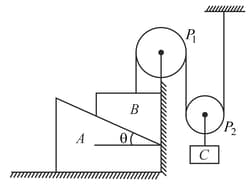A small spherical ball undergoes an elastic collision with a rough horizontal surface. Before the collision, it is moving at an angle to the horizontal (see figure). You may assume that the frictional force obeys the law during the contact period, where is the normal reaction on the ball and is the coefficient of friction.
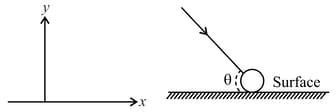
Obtain , so that the subsequent horizontal range of the ball after leaving the horizontal surface is maximised.
Find the allowed range for


Important Questions on Laws of Motion
A lift is going up. The total mass of the lift and the passengers is . The variation in the speed of the lift is given in the graph.
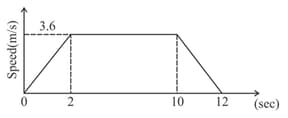
(a) What will be the tension in the rope pulling the lift at equal to
(i) (ii) and (iii) ?
(b) What is the height through which the lift takes the passengers?
(c) What will be the average velocity and average acceleration during the course of entire motion?
The system shown in figure is released from rest. Calculate the value of accelerations and (where is with respect to )
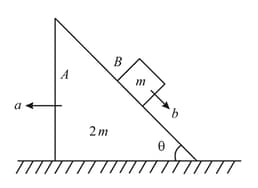
What will be the value of the hanging block as shown in the figure which will prevent the smaller block from slipping over the triangular block. All the surface are frictionless and the string and the pulley are light.
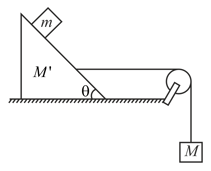
Figure shown a monkey is climbing on a rope that goes over a smooth light pulley and a block of equal mass hanging on the other end. Show that the monkey and the block move in the same direction with equal acceleration, whatever force the monkey exerts on the rope If initially both were at rest, their separation will not change as time passes.
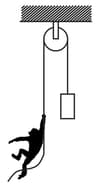
In the arrangement shown in the figure, a wedge of mass is placed on a smooth horizontal surface. A small and light pulley is connected on its top edge as shown. A light flexible thread passes over the pulley. Two blocks having mass and are connected at the ends of the thread. is on smooth horizontal surface and rests on inclined surface of the wedge. Base length of the wedge is and inclination is is initially near the top edge of the wedge. If the whole system is released from rest. Calculate:
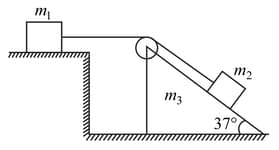
(i) velocity of wedge when reaches its bottom
(ii) velocity of at that instant and tension in the thread during motion of . All the surfaces are smooth
Neglecting friction every where, find the acceleration of . Assume .
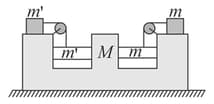
In the figure shown and are massless pulleys. is fixed and can move. Masses of and are and , respectively. All contacts are smooth and the string is massless. . Find the acceleration of block in .
